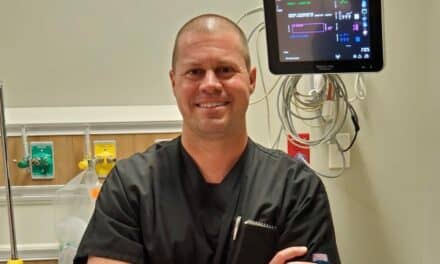By Dave Harrington, PhD
Well, after about 18 months, the election process is finally over. (Side note: How come Canada is able to elect their prime minister in less than 90 days?) Just think about how much good all the money spent on political ads could have done for people with medical needs and how far it could have gone in upgrading VA hospitals? No, we had to listen to countless ads that told us nothing of value. We need to do better.
I recently read an article about what most companies pay orthopedic surgeons. Again, it was off the wall. One orthopedic surgeon was paid over $2,000,000 for “consulting.” Did his consulting reduce medical costs, improve the products, or bring new ones into use? We have no data—and we need to do better.
At a recent trade show, I asked several vendors which hospitals they looked to as sources of information for products and ideas. Did they ever work with clinical engineers —or, as they’re now called, healthcare technology managers? When I asked this, I was met with blank stares. One person even asked: What’s a health care manager?” We need to do better.
Communication 101
I’ve seen lots of advertisements recently about predictive maintenance webinars and seminars, as well as articles about the benefits of preventive maintenance. One of the best answers I ever received about preventive maintenance was it’s a great way for companies to generate revenue, although it’s not always a factor in better patient care.
But, remember: We have the best preventative and predictive maintenance indicators in the universe, if we listen to them: the device users. The device users know the quirks of the equipment better than the designers, since they work with it every day. But you have to talk with these individuals on a regular basis to get their input.
After you do your rounds, you will always come back with work orders from the staff. But, remember: Communication is key and, unfortunately, it’s not something that is taught in too many biotech programs. We need to do a better job of communicating and listening to others.
Change on a National Level
What’s more, we have seen and heard a lot of information about rising healthcare costs, ranging from EpiPens® and implants to drugs and insurance. But no one seems to look deeper than the headlines to determine why the costs are going up. Case 1: A local hospital paid $0.73 for a half-liter bag of normal saline on September 30; but after the new group purchasing agreement kicked in with 30-plus hospitals, the price jumped to $2.77 on October 2.
The product can be produced for about $0.17 per container in a non-cancer-causing container—Polypropylene—and not in the present PVC, which the EPA wants banned, while another government agency, the FDA, says it’s not a problem at all.
Case 2: Administrators at a different hospital wanted install a new surgical robotics system, but the FDA had not yet approved it.. So the hospital had to delay the installation, impacting a lot of potential patients. After four or so months of delays, the FDA cleared the device for use—with no comments, warnings, or reasons for stalling.
Those of us in this industry—the clinical engineers and healthcare technology managers—need to do a better job of interfacing with the FDA so that we can provide input about the problems we see and help other board members look at new technologies and how they will impact patient care and healthcare costs. We just need to do better.
Showing Our Value
In many of the hospitals that I work with, the clinical and technical people are concerned about how to approach those in the C-suite with problems that need to be resolved. In one institution, the clinical and technical people actually drew lots to see who would present to the C-suite, as neither group had any real connection to the hospital managers.
One hospital I worked with had a HVAC system that was so bad that equipment kept overheating, but no one wanted to be the point person to talk to hospital management. So I got “invited” in to do the task. We prepared the charts, graphs, financials, timeline, etc., and then sent them to the C-suite.
About a week later, I got called to do the presentation. And when the first question from the C-suite indicated that none of them had read what we prepared, I thought I said to myself: “The ‘C’ in C-suite must stand for ‘clueless.’” (Apparently I said it out loud.) I heard a lot of gasps from the audience and asked to leave the meeting. I guess the truth hurts. The project got done, but I never got paid for it. I needed to do better there—but if this admission helps one of you do a better job when interfacing with the C-suite, it was worth it.
Remember: We are in a great profession. We just need to communicate that to those around us.
Dave Harrington, PhD, is a healthcare consultant in Medway, Mass. For more information, contact chief editor Keri Forsythe-Stephens at [email protected].





Thanks Dave. Good column.
Did changing the name of the profession (at least be some) to HTM help or hurt in communicating what you do and being recognized for doing it?
Is it possible that changing the name of the profession to HTM was a confusing setback?